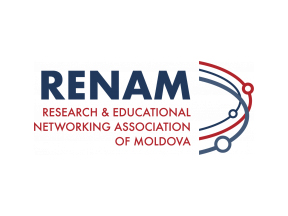-edited-1140x680.jpg)
Supporting medical examinations in Moldova
Many fields of medicine rely on imaging internal body structures and tissues as a tool to aid clinical analysis, diagnosis and treatment. But collecting, storing, and accessing medical images that are integrated with the medical records of individual patients in hospital information systems is a challenge. With the support of the EU-funded EaPConnect project, the Moldovan NREN, RENAM, provides Internet network infrastructure, computer processing and storage for the Emergency Medicine Institute in Chisinau, which caters to the imaging data needs of medical professionals.
RENAM has provided 2 DICOM (Digital Imaging and Communications in Medicine) portals and 6 DICOM servers to handle the generation, storage and usage of medical images, which has grown during the COVID-19 pandemic.
For patients, this means more accurate diagnoses and more successful treatment. Around 366,000 examinations of more than 170,000 patients have now made use of the DICOM system.
Natalia Golubev heads the IT Department at the Emergency Medicine Institute (Chisinau), where she has worked for many years with IT solutions to improve curative and organisational processes. She recounts her experiences:
What are the main challenges in everyday work for doctors in your hospital?
Documentation of medical examinations is the main challenge that doctors at the Emergency Medicine Institute face every day. They work with the patients’ case histories, medical investigations and conclusions, descriptions of the curative process, laboratory tests results, medical procedures, etc. As a result, large medical data sets are collected, including medical images, and these should be integrated with the existing patient data. In all these duties a hospital information system such as the DICOM Network really helps.
How did your hospital work with medical images before DICOM Network implementation
Previously, radiographic images were printed on photo-sensitive films, which are quite expensive. For other medical imaging techniques, the results could be archived on CD, or the doctors went to the imaging cabinets and viewed the images directly on the medical imaging equipment.
What is specific for the DICOM format?
DICOM is the standard for the communication and management of medical imaging information and related data. It is most commonly used for storing and transmitting medical images and allows the integration of devices such as scanners, servers, workstations, printers, network hardware, and picture archiving and communication systems (PACS) from multiple manufacturers. We use the DICOM format in our database for storing images from radiographic examinations, as well as tomographic, magnetic resonance, sonographic and angiographic images.
What are the main benefits of the DICOM Network implementation?
The DICOM Network covers the whole workflow of documentation of medical examinations: from collecting patient medical imaging data to archiving examinations in the patient’s medical record. It offers the functionality needed for secure role-based access to examinations in online mode, including reporting and filtering. With this support, around 300 patients are examined and imaged per day, with a much smoother experience enhancing the quality of the service they receive.
Around 500 doctors are able to access these data direct from their place of work, without printing radiographic images on expensive consumables, so the overall costs of medical examinations are reduced. In addition to convenient visualisation, an archive of examinations of each patient is created, which allows analysis of the dynamics of disease evolution.
What support does RENAM offer?
The Emergency Medicine Institute has been cooperating with RENAM for more than 18 years. Firstly it was Internet network infrastructure. Due the specifics of our organisation, stable Internet connection is critical for offering emergency medical services 24/7. Then we got increased storage capacity and processing power – access to RENAM Storage and Cloud infrastructure. We are jointly developing facilities of the datacentre that is located in the Emergency Medicine Institute by installing additional new servers, which are used by the DICOM Network application. Also, we are protected from harmful attacks or interventions.
How did COVID-19 affect the hospital and its work?
Under the COVID-19 pandemic the number of critical cases increased. We started a collaboration with the Clinical Hospital of Infectious Diseases “Toma Ciorba” (Chisinau), where digital radiographic equipment was installed for COVID-19 support, and now this hospital is connected to the DICOM Network as well.
There’s now also a need for remote image transmission. It is very helpful to be able to do this, because doctors who read and describe examinations should not come into contact with patients. Also, it is important to analyse the condition of patients in a dynamic way, and that’s why having an archive of images to compare several examination results has become an indispensable feature.
What opportunities does DICOM bring for Moldovan researchers in the medical domain?
As the Emergency Medicine Institute is both a hospital and a research organisation, we clearly understand that precise documentation of medical examinations for doctors today also means that big data will be available for scientific researchers to analyse in future. It could facilitate studies that were not feasible in the past, and lead to new insights and deep understanding regarding health and disease. If all the hospitals and medical centres in Chisinau, or even in the whole country, could cooperate using advanced ICT solutions, all practising clinicians could benefit – finding information, learning and developing.
For more information please contact our contributor(s):


